Track Limit
On the circuit, drivers are not allowed to drive everywhere. Driver must drive on the “road” decided by the regulations. This road is defined as a “track” in the regulations.
Basically, the truck is asphalt paved. It is the area generally called “course”. Areas of the run-off area, such as unpaved lawns and gravel, are not recognized as truck.
Therefore, in order to record a fast lap time, it is prohibited to drive off the track intentionally, such as by short-cutting a corner. Intentionally driving off the track is called “Track Limit” and is an act that is judged to be a regulation violation.
Definition of “Track”
The definition of a “Track” that is allowed to drive on the circuit is defined in the International Sporting Code Appendix O. Appendix O describes the contents of “Procedures for the Recognition of Motor Racing Circuits”, which mainly defines the circuit requirements necessary for holding automobile races.
In the regulation, “Track” is defined as “a road specially built or adapted to be used for circuit competitions. A track is defined by the outer edges of the racing surface”.
The regulation is that the track must be bordered by a white line with a width of at least 10 cm. In other words, the inside of the white lines drawn edge of the road is considered to be the track. By the way, the white line is included in the track.
The track is the inside of the white lines
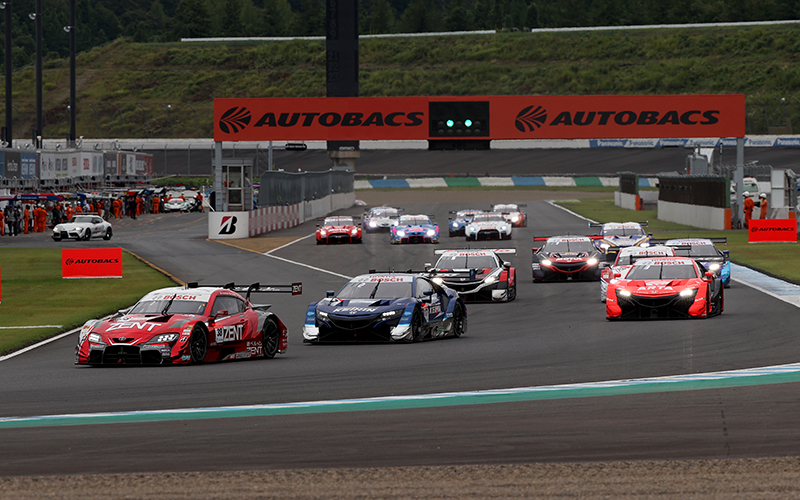
出典:supergt.net
Prohibition of Track Limit
In order to record a fast lap time on the circuit, driver needs to make good use of the “curbs” painted red and white stripe on the edge of the track. However, curbs are not recognized as track by the regulations. Therefore, if all four tires run off the track, it will be judged as a “Track Limit” violation.
Therefore, the driver must drive the car so that it does not deviate from the white line. In other words, if even one tire is on the white line, it will not be judged as a ”Track Limit” violation.
If Driver Violate the Track Limit
If it is judged that there was an advantage, such as improving the lap time or raising the position by violating the track limit, the penalty may be imposed.
During the qualifying session, it may be deleted the lap time or imposed grid down penalty.
During the race, if multiple track limit violations are confirmed, penalty such as drive-through penalty or time penalty may be imposed.
Since the action of violating the track limit itself is not permitted by the regulations, it may be judged as a violation regardless of whether it has an advantage or not, and a penalty may be imposed.
The prohibition of track limit violations is described in Chapter 4 of the “International Sporting Code Appendix L”. The content of Appendix L is a common regulations that applies to all FIA-cirtified automobile motorsports.
CHAPTER IV - CODE OF DRIVING CONDUCT ON CIRCUITS
2. Overtaking, car control and track limits
c) Drivers must use the track at all times and may not leave the track without a justifiable reason. For the avoidance of doubt, the white lines defining the track edges are considered to be part of the track but the kerbs are not.
Should a car leave the track for any reason, the driver may rejoin. However, this may only be done when it is safe to do so and without gaining any lasting advantage. A driver will be judged to have eft the track if no part of the car remains in contact with the track.
Example of Track Limit
Shortcut at the Corner-in side
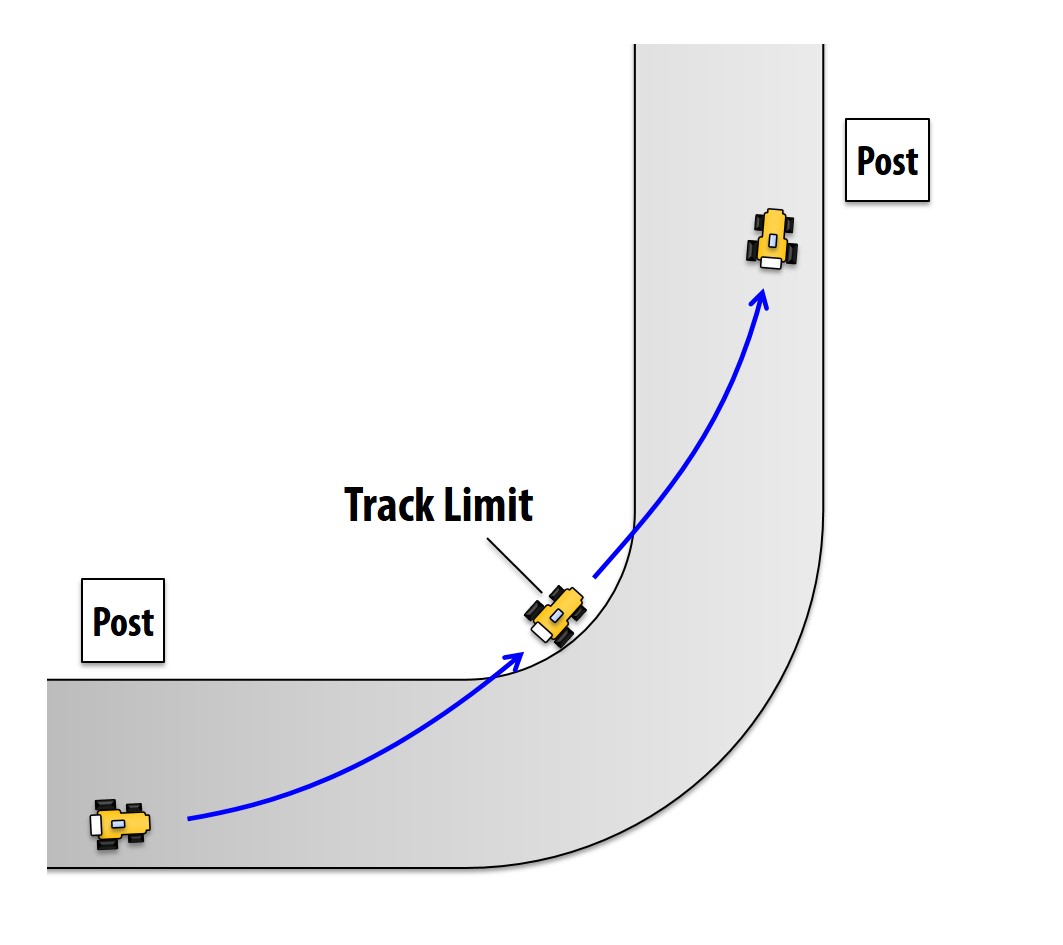
Overshoot at the Corner Exit
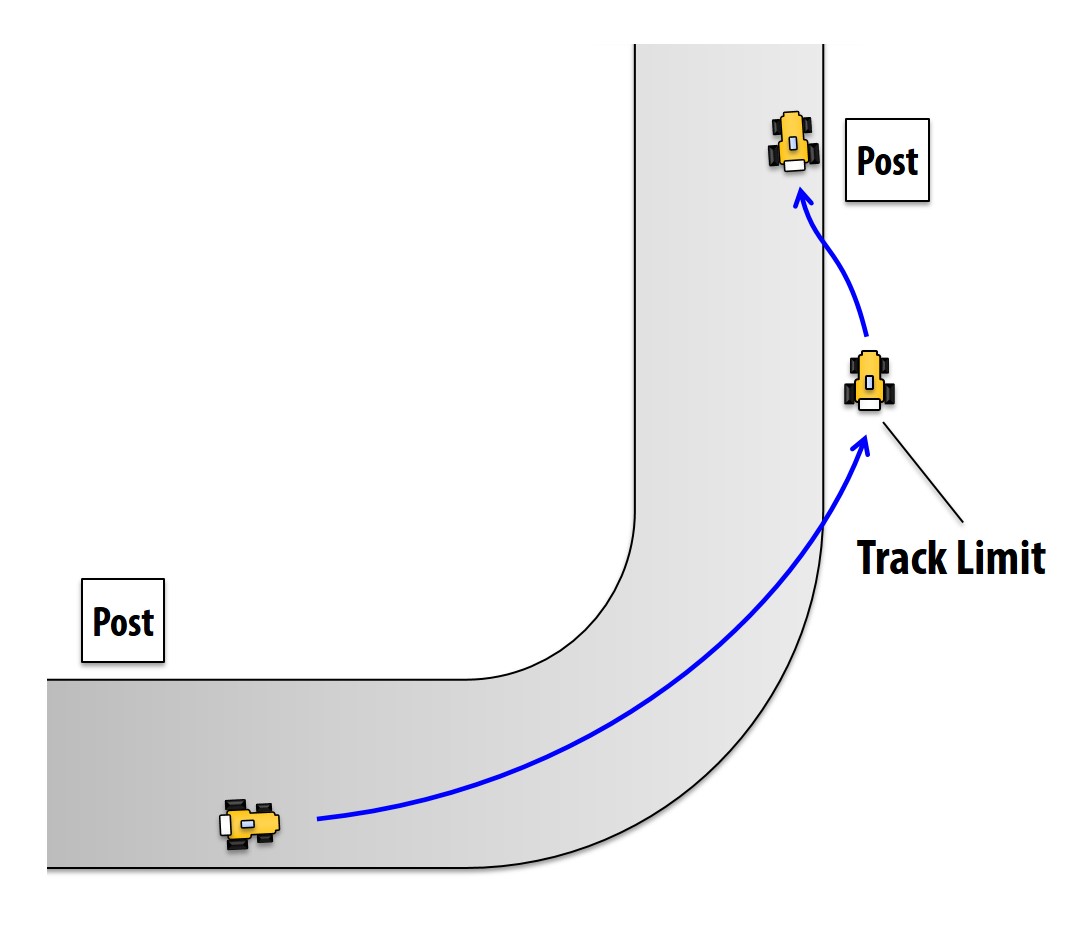
Cars off the track must safely rejoin to the course
In some cases, driver may unintentionally go off the track by overshooting by the wrong brake timing. In such cases, driver must safely rejoin to the course without gaining an advantage.
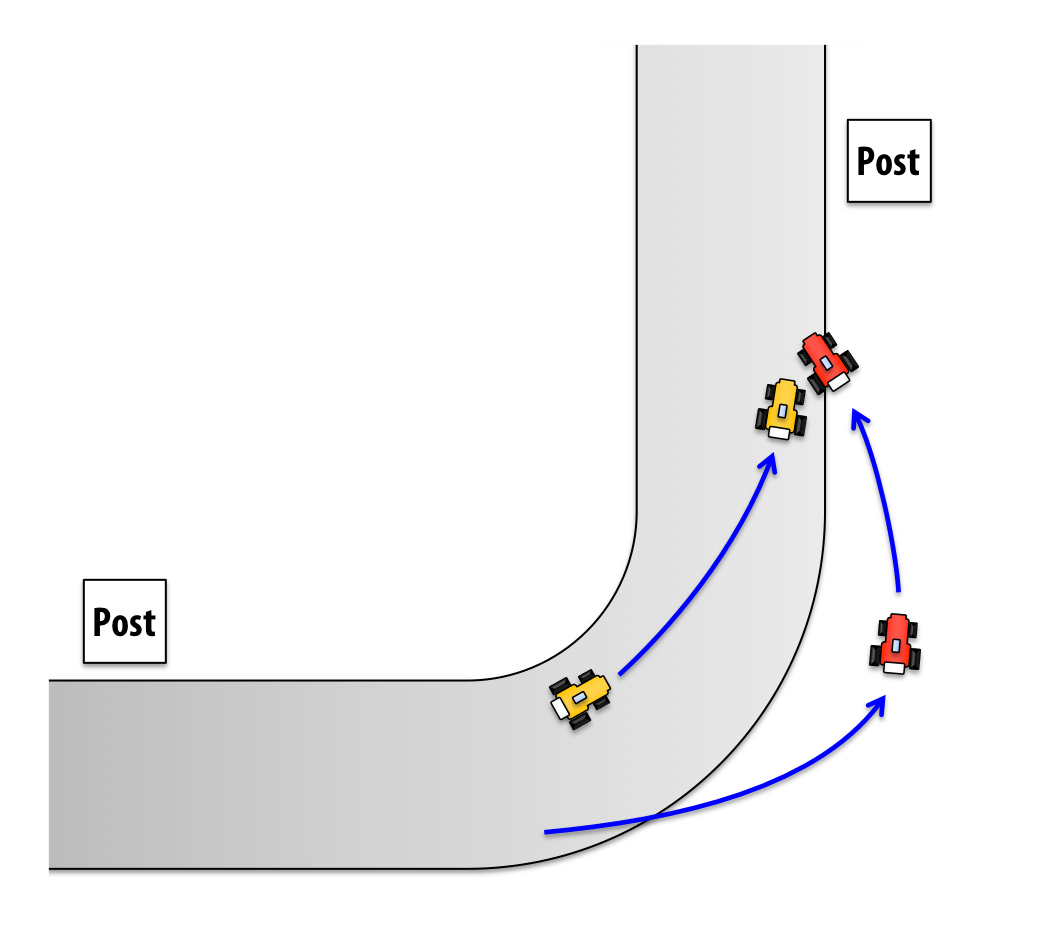
2019 FIA Formula 1 Round 7 Canadian Grand Prix
When the overrunning Sebastian Vettel returned to the track, it interfered the Lewis Hamilton who was driving behind on the track. Sebastian Vettel was imposed 5 seconds time penalty as dangerous return to the track.
Sebastian Vettel finished the race at the top, but he was switched to Lewis Hamilton and finished second due to this time penalty.
https://twitter.com/AlmahariIssa/status/1137826375002468353?s=20
No.5 Sebastian Vettel
5 Seconds Time Penalty
UNSAFE RE-ENTRY AND FORCING ANOTHER DRIVER OFF THE TRACK
Related Article



















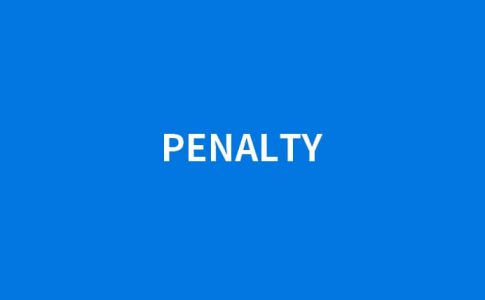


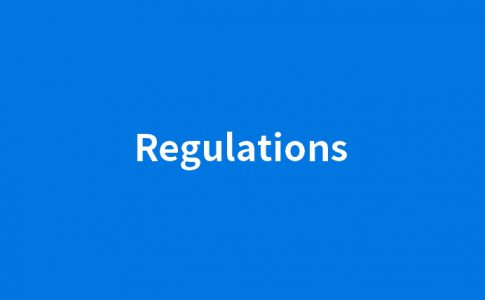

2. Definitions
– Track: a road specially built or adapted to be used for circuit competitions. A track is defined by the outer edges of the racing surface.
7. Circuit conception
7.6 Track edges, verges and run-off areas
Unless otherwise indicated because of features such as pit exit and entry roads, a permanent track should be bordered along its entire length on both sides by continuous white lines clearly marked in anti-skid paint, minimum 10 cm wide, and compact verges, usually between 1 m and 5 m wide, having an even surface. These verges should be a continuation of the transversal profile of the track, with no step between track and verge: any transition should be very gradual.
A run-off area is an area of ground between the verge and the first line of protection. A run-off area should be graded to the verge. If the area has a slope, this should not exceed 25% upwards (does not apply to gravel beds) or 3% downwards, with a smooth transition from track to run-off area, in relation to the lateral projection of the track surface.